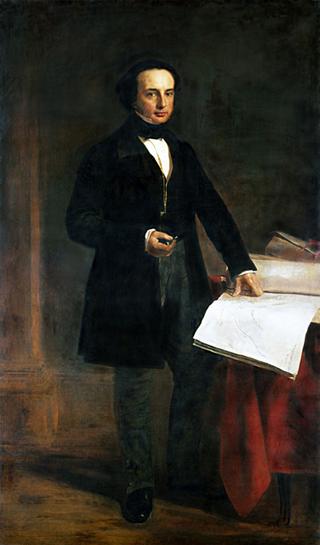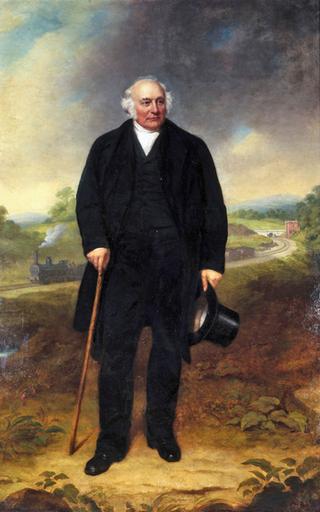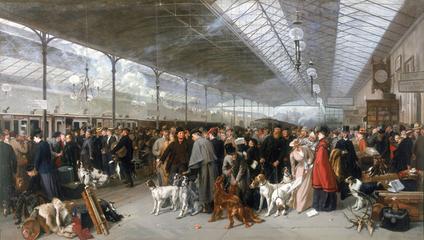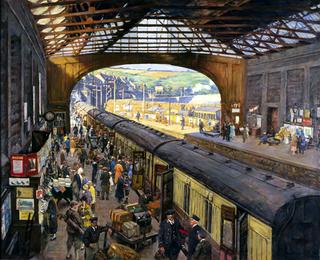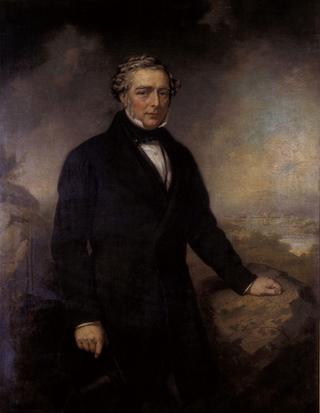
Portrait of C. Fox, East Indian Railway Assistant Engineer
- Made:
- 1852-01-01 in Serampore
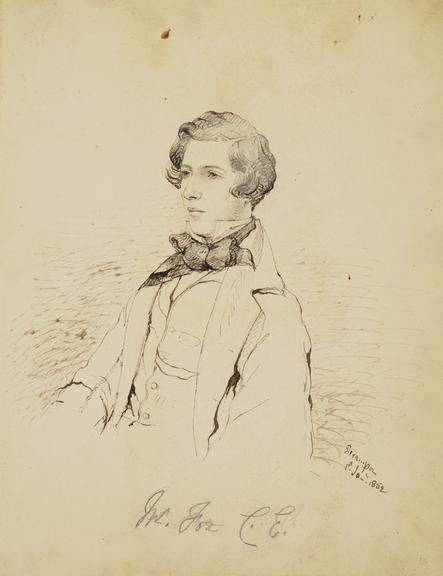
Drawing, ink, Mr Fox C.E. by an unknown artist, 1852. Depicts a young man in European dress, seated and seen in half profile from the waist up. The title is written below and at right are the words "Serampore, 1st Jan. 1852". Unframed. From the collection of George Turnbull, Chief Engineer of the East Indian Railway.
Mr. C. Fox was one of three young men who travelled from London to India with George Turnbull, in Turnbull’s words ‘under some vague promise of employment from R. M. Stephenson’, the managing director of the East India Railway Company. It did not turn out to be vague after all: by 1856 Fox was serving as the Assistant Engineer for the Patna area in northeast India. The ‘C.E.’ inscribed on the portrait after his name likely refers to him being a civil engineer.
Turnbull was at first unhappy that as chief engineer he had not been able to influence the appointment of engineers serving under him, but he soon came to appreciate Fox’s ‘valuable’ engineering work on the line.
Alongside the British, the French also exerted colonial control over areas of India. In 1851 Fox found himself in trouble with the French authorities. Turnbull wrote in his autobiography ‘Visited Mr. Fox in the French prison; he had got into some squabble with a French sepoy [an Indian soldier serving under European orders], and the French authorities took him into custody and kept him in durance for a few weeks. He had comfortable quarters, and seemed rather to enjoy the fun of the thing.’
The drawing’s artist is not known. It could not have been drawn by Turnbull himself, because on 1 January 1852 he was in Berhampore, over 170km away from Serampore.
Scottish engineer George Turnbull (1809-1889) oversaw the creation of one of the first railways in India, the East Indian Railway (EIR). The EIR ran from near Calcutta (now Kolkata), an East India Company trading post in the north-east that the Company established as the capital from 1773. The terminus was originally Benares (now Varanasi), but the line quickly extended to New Delhi in the north, which became the capital of India in 1911. Calcutta and New Delhi are over 1,300km miles from each other – further than the distance between Paris, France and Budapest, Hungary.
Turnbull collected artworks during his time in India, many of which were produced by EIR engineers. These watercolours and drawings provide a rare view of nineteenth-century India from the perspective of the British engineers designing and building the country’s first railways. The collection includes landscape scenes and portraits. While many of the landscapes show the construction of the railway, others focus entirely on India’s local architecture or its rural spaces. The portraits are of people Turnbull encountered while in India. While the portraits of British people are inscribed with their names, most of the Indian people depicted remain anonymous or identified only by their job.
The British introduced railways in India to satisfy the mounting economic and military needs of their colonial administration. They hoped that the new technology would foster an increased sense of collective identity by making it easier to travel quickly between distant regions. They also hoped the railways would socially ‘improve India’ by instilling a sense of punctuality among Indians, a quality British colonialists believed Indians lacked. The racist stereotypes underpinning these intentions, and the interconnected idea that technology could trigger social change, were common beliefs in nineteenth-century British society.
Details
- Category:
- Pictorial Collection (Railway)
- Object Number:
- 2017-7099
- Materials:
- ink and paper (fibre product)
- type:
- drawing, ink
